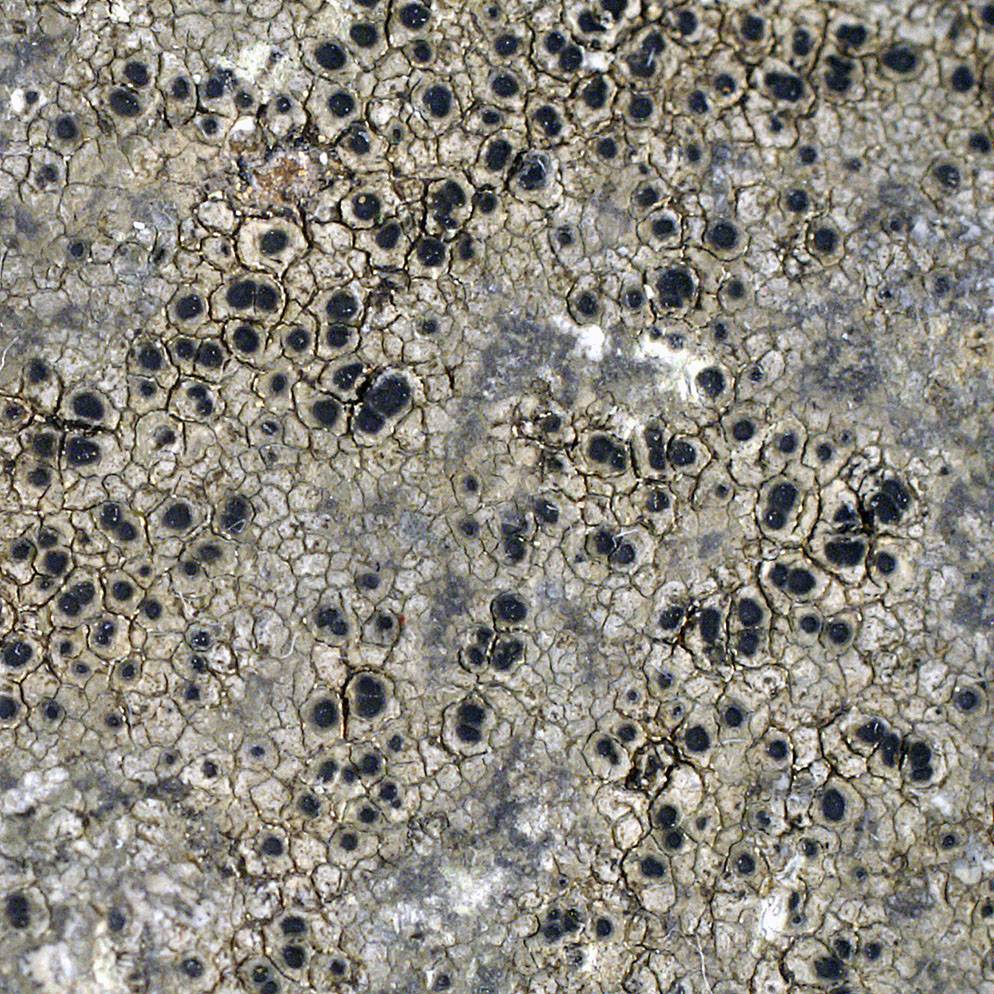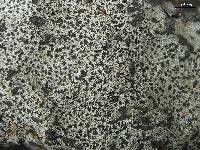
Consortium of Lichen Herbaria
- building a Global Consortium of Bryophytes and Lichens as keystones of cryptobiotic communities -
- Home
- Search
- Images
- Species Checklists
- US States: O-Z >
- US National Parks
- Central America
- South America
- US National Parks
- Southern Subpolar Region
|
|
|
|
Family: Megasporaceae
|
Nash, T.H., Ryan, B.D., Gries, C., Bungartz, F., (eds.) 2007. Lichen Flora of the Greater Sonoran Desert Region. Vol 3. Thallus: areolate, sometimes rimose at the edge, 2-6 cm in diam., 0.1-0.3(0.4) thick areoles: angular, rarely rounded, flat to sometimes concave, contiguous, separated by small cracks, (0.2-)0.4-0.9(-1.4) mm in diam. prothallus: indistinct or thin, at the thallus edge, sometimes fimbriate, black to olive-black or brown-black, 0.1-0.3(-0.7) mm wide surface: white-gray to olive-gray or gray, dull upper cortex: 30-55 µm thick, uppermost part brown to brown-gray, 10-15 µm thick, cells 5-7 µm in diam.; cortex covered with an epinecral layer 3-6(-10) µm thick photobiont: chlorococcoid, cells ±round, 6-13(-20) µm in diam. Apothecia: aspicilioid, rare to numerous, ±crowded, 0.1-0.5 mm in diam., 1-2(-5) per areole, round, sometimes angular disc: black, without pruina, concave thalline margin: thin, flat, concolorous with thallus or somewhat darker exciple: I- to partly I+ blue, 30-70(-90) µm; uppermost cells brown, ±globose, 4-6 µm in diam. epihymenium: olive to olive-brown or brown, without or with few crystals, N+ green, K+ brown hymenium: hyaline, I+ persistently blue or partly turning yellow, 120-150(-160) µm tall paraphyses: moniliform, with (3-)4-5(-8) upper cells ±globose, uppermost cell 3-4(-5) µm wide, in lower part 2 µm wide, not or slightly branched and anastomosing subhymenium and hypothecium: pale, I+ persistently blue, together 50-70 µm thick asci: clavate, 80-110 x 15-26 µm, 8-spored ascospores: hyaline, simple, ellipsoid, 16-22(-24) x 10-12 µm Pycnidia: rare, 1/areole, immersed, up to 150 µm in diam., with a black, punctiform ostiole, 60-70 µm in diam. conidia: filiform, 14-20 x 0.6-0.8 µm Spot tests: cortex and medulla I-, K+ yellow or slowly turning orange, C- Secondary metabolites: substictic acid. Substrate and ecology: on siliceous rock at high altitude, 2900-3000 m World and Sonoran distribution: Mount Baldy Wilderness area in Apache Co., Arizona. Notes: Aspicilia substictica is found at high altitude in Mount Baldy Wilderness, Apache County, Arizona; probably this new species occurs elsewhere in the southern Rocky Mountains. The species is characterized by a thin, gray thallus, small apothecia, a hymenium of medium height, spores of medium size, rather long conidia and the presence of substictic acid. Aspicilia cinerea differs from A. substictica by having a thicker thallus, larger apothecia, shorter hymenium and by the presence of norstictic acid. Aspicilia anglica, found in California, also contains substictic acid, but differs by having a thicker, brown thallus, larger apothecia and taller hymenium. Substictic acid is also found in the boreal - arctic species Aspicilia mashiginensis (Zahlbr.) Oxner. |
Powered by Symbiota















